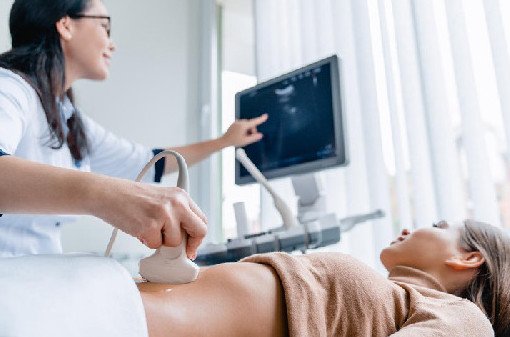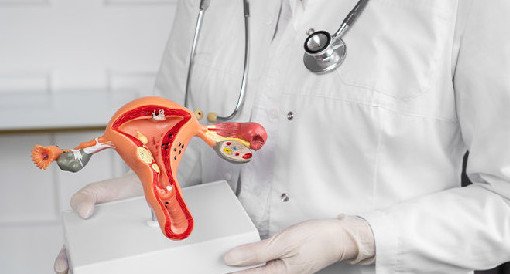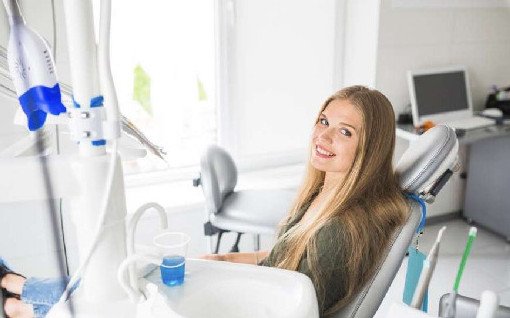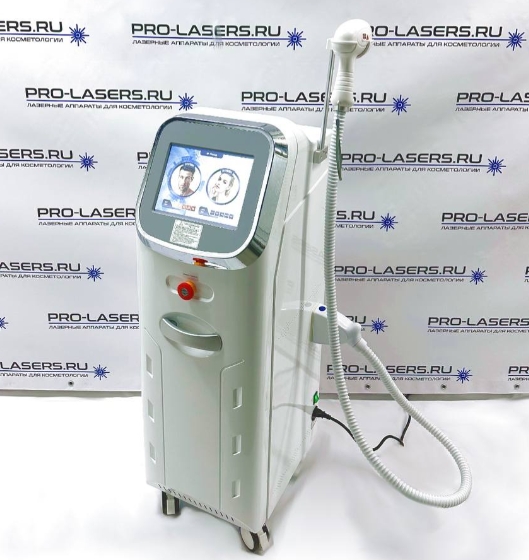Журнал "Атеротромбоз" №1, 2020г.
DOI: 10.21518/2307-1109-2020-1-18-32
Н.К. Вереина, ORCID: 0000-0003-0678-4224, e-mail: vereinanata@yandex.ru
Т.В. Мовчан, ORCID: 0000-0003-3203-7791
В.С. Чулков, ORCID: 0000-0002-0952-6856
Южно-Уральский государственный медицинский университет; 454092, Россия, Челябинск, ул. Воровского, д. 64
Цель исследования: оценить влияние факторов, независимо ассоциированных с артериальными и венозными тромбозами у женщин в возрасте 18–44 лет вне беременности.
Материалы и методы. В исследование по типу «случай – контроль» были включены 319 женщин: в группу «Случаи» вошли 134 пациентки с верифицированными артериальными и венозными тромбозами, в «Контроль» – 185 пациенток без тромбозов. Критерии включения: возраст 18–44 лет; наличие первого эпизода инструментально верифицированного артериального или венозного тромбоза; согласие на участие в исследовании. Критерии исключения: беременность, установленная акушером-гинекологом, на момент развития тромбоза и/или положительные результаты теста на бета-ХГЧ; послеродовый период до 6 недель на момент развития тромбоза; ментальные расстройства и психические заболевания, затрудняющие контакт. Всем женщинам осуществлялся клинический осмотр, сбор соматического и акушерского анамнеза, анализ медицинской документации, биохимическое исследование, тестирование на наследственные и приобретенные тромбофилии. Для количественной оценки независимых взаимосвязей факторов риска с тромботическими событиями использован метод множественной логистической регрессии.
Результаты. В структуре преобладали венозные тромбозы (75%), артериальные тромбозы (25%) были преимущественно представлены ишемическими инсультами, инфаркт миокарда был у трех пациенток (2,2%). Наиболее частым триггером тромбоза являлось применение комбинированных гормональных контрацептивов в сочетании с другими провоцирующими факторами. У 23 женщин (17,2%) триггер тромбоза установить не удалось. В группе «Случаи» оказалась значимо выше доля женщин ≥40 лет; интенсивность курения; большая частота отягощенного семейного анамнеза по ВТЭО до 50 лет у родственников 1-й линии родства, дислипидемии, гиперфибриногенемии, коморбидности, наличия тромбофилий высокого риска. Независимыми факторами, ассоциированными с развитием артериальных и венозных тромбозов у молодых женщин, оказались: наличие заболеваний желчного пузыря (ОШ = 12,1, 95% ДИ 2,5–67,5), наличие сердечно-сосудистых заболеваний (ОШ = 10,2; 95% ДИ 3,6–29,1); уровень общего холестерина (ОШ = 7,7; 95% ДИ 4,4–13,5); болезни органов дыхания (ОШ = 3,7; 95% ДИ 1,0–11,5); применение комбинированных гормональных контрацептивов (ОШ = 3,4 ДИ 1,7–6,8); варикоз вен нижних конечностей (ОШ = 2,5; 95% ДИ 1,0–4,9).
Заключение. Выделение наиболее важных факторов риска для артериальных и венозных тромбозов позволит расширить понимание единых патогенетических процессов тромбообразования в популяции женщин фертильного возраста и совершенствовать их персонализированное прогнозирование и раннюю профилактику.
Для цитирования: Вереина Н.К., Мовчан Т.В., Чулков В.С. Факторы риска венозных и артериальных тромбозов у молодых женщин вне беременности. Атеротромбоз. 2020;(1):18–32. doi: 10.21518/2307-1109-2020-1-18-32.
Конфликт интересов: авторы заявляют об отсутствии конфликта интересов.
Risk factors venous and arterial thrombosis in young women out of pregnancy
Natalya K. Vereina, ORCID: 0000-0003-0678-4224, e-mail: vereinanata@yandex.ru
Tatiana V. Movchan, ORCID: 0000-0003-3203-7791
Vasiliy S. Chulkov, ORCID: 0000-0002-0952-6856
South Ural State Medical University; 64, Vorovskiy St., Chelyabinsk, 454092, Russia
Introduction: to assess the influence of factors independently associated with arterial and venous thrombosis in women aged 18-44 years outside pregnancy.
Material and methods. The case-control study included 319 women: the cases group included 134 patients with verified arterial and venous thrombosis, the control group included 185 patients without thrombosis. Inclusion criteria: age 18-44 years; the presence of the first episode of instrumentally verified arterial or venous thrombosis; consent to participate in the study. Exclusion criteria: pregnancy; the postpartum period up to 6 weeks at the time of thrombosis; mental disorders and mental illness. All women underwent clinical examination, collection of somatic and obstetric history, testing for biochemical parameters, hereditary and acquired thrombophilia. To quantify the independent relationships of risk factors with thrombotic events, the multiple logistic regression method was used.
Results. In the group of cases, venous thrombosis was in 75% women, arterial thrombosis – in 25%. Ischemic strokes prevailed in the structure of arterial thrombosis. The most common trigger was the use of estrogen-progestin containing contraceptives in combination with other risk factors. In 23 cases (17.2%) the thrombosis were unprovoked. The proportion of women ≥ 40 years old, smoking intensity; family history of VT E in relatives up to 50 years of age, dyslipidemia, hyperfibrinogenemia, comorbidity, and the presence of thrombophilia met with a higher frequency in the group of cases. Independent factors associated with the development of arterial and venous thrombosis in young women were: the presence of diseases of the gallbladder (OR = 12,1 95% CI 2.5–67.5), cardiovascular diseases (OR = 10.2; 95% CI 3.6–29.1); total cholesterol level (OR = 7.7; 95% CI 4.4–13.5); respiratory diseases (OR = 3.7; 95% CI 1.0–11.5); the use of combined hormonal contraceptives (OR = 3.4; 95% CI 1.7–6.8); varicose veins of the lower extremities (OR = 2.5; 95% CI 1.0–4.9).
Conclusion. The identification of the most important risk factors for arterial and venous thrombosis will expand the understanding of the common pathogenetic way of thrombosis in a population of women of childbearing age and improve their personalized prognosis and early prevention.
For citation: Vereina N.K., Movchan T.V., Chulkov V.S. Risk factors venous and arterial thrombosis in young women out of pregnancy. Aterotromboz = Atherothrombosis. 2020;(1):18–32. (In Russ.) doi: 10.21518/2307-1109-2020-1-18-32.
Conflict of interest: the authors declare no conflict of interest.
Загрузить файл в формате PDF
Список литературы / References
- Бойцов С.А., Чучалин А.Г. (ред.). Диспансерное наблюдение больных хроническими неинфекционными заболеваниями и пациентов с высоким риском их развития. М.; 2014. 112 с. Режим доступа: https://minzdrav.midural.ru/. / Boytsov S.A., Chuchalin A.G. (eds.). Regular medical checkup of patients with chronic noncommunicable diseases and high-risk patients. Мoscow; 2014. 112 p. (In Russ.) Available at: https://minzdrav.midural.ru/.
- Воевода М.И., Ковалькова Н.А., Рагино Ю.А., Травникова Н.Ю., Денисова Д.В. Распространенность метаболического синдрома у жителей Новосибирска в возрасте от 25 до 45 лет. Терапевтический архив. 2016;88(10):51–56. doi: 10.17116/terarkh2016881051-56. / Voevoda M.I., Kovalkova N.A., Ragino Yu.I., Travnikova N.Yu., Denisova D.V. Prevalence of metabolic syndrome in 25–45-years-old Novosibirsk dwellers. Terapevticheskiy arkhiv = Therapeutic archive. 2016;88(10):51–56. (In Russ.) doi: 10.17116/terarkh2016881051-56.
- Eichinger S., Evers J.L.H., Glasier A., La Vecchia C., Martinelli I., Skouby S. et al. Venous thromboembolism
in women: a specific reproductive health risk. Human Reproduction Update. 2013;19(5):471–482. doi: 10.1093/humupd/dmt028. - Heinemann L.A., Dinger J.C. Range of published estimates of venous thromboembolism incidence in young women. Contraception. 2007;75(5):328–336. doi: 10.1016/j.contraception.2006.12.018.
- Putaala J. Ischemic stroke in the young: Current perspectives on incidence, risk factors, and cardiovascular
prognosis. European Stroke Journal. 2016;1(1):28–40. doi: 10.1177/2396987316629860. - Putaala J., Antti J., Metso A.J., Metso T.M., Konkola N., Kraemer Y. et al. Analysis of 1008 Consecutive Patients
Aged 15 to 49 With First-Ever Ischemic Stroke. The Helsinki Young Stroke Registry. Stroke. 2009;40(4):1195–1203. doi: 10.1161/STROKEAHA.108.529883. - Weill A., Dalichampt M., Raguideau F., Ricordeau Ph., Blotire P.-O., Rudant J. et al. Low dose oestrogen combined oral contraception and risk of pulmonary embolism, stroke, and myocardial infarction in five million French women: cohort study. BMJ. 2016;353. doi: 10.1136/bmj.i2002.
- Izadnegahdar M., Singer J., Lee M.K., Gao M., Thompson C.R., Kopec J., Humphries K.H. Do younger women fare worse? Sex differences in acute myocardial infarction hospitalization and early mortality rates over ten years. J Women′s Health. 2014;23(1):10–17. doi: 10.1089/jwh.2013.4507.
- Chandrasekhar J., Gill A., Mehran R. Acute myocardial infarction in young women: current perspectives. Int J Womens Health. 2018;10:267–284. doi: 10.2147/IJWH.S107371.
- Lacruz B., Tiberio G., Latorre A., Villalba J.C., Bikdeli B., Hirmerova J. et al. RIETE Investigators Venous thromboembolism in young adults: Findings from the RIETE registry. Eur J Intern Med. 2019;63:27–33. doi: 10.1016/j.ejim.2019.02.007.
- Wendelboe A.M., Raskob G.E. Global burden of thrombosis: epidemiologic aspects. Circulation Research. 2016;118(9):1340–1347. doi: 10.1161/CIRCRESAHA.115.306841.
- Prandoni P., Lensing A.W., Cogo A., Cuppini S., Villalta S., Carta M. et al. The long-term clinical course
of acute deep venous thrombosis. Ann Intern Med. 1996;125(1):1–7. doi: 10.7326/0003-4819-125-1-199607010-00001. - Prandoni P. Venous and arterial thrombosis: Two aspects of the same disease? Clinical Epidemiology. 2009;2009(1):1–6. doi: 10.2147/clep.s4780.
- Previtali E., Bucciarelli P., Passamonti S.M., Martinelli I. Risk factors for venous and arterial thrombosis. Blood Transfus. 2011;9(2):120–138. doi: 10.2450/2010.0066-10.
- Prandoni P. Venous and arterial thrombosis: is there a link? In: Islam M. (ed.) Thrombosis and Embolism: From Research to Clinical Practice. 2016, pp. 273–283. doi: 10.1007/5584_2016_121.
- Prandoni P. Is there a link between venous and arterial thrombosis? A reappraisal. Int Emerg Med. 2020;15(1):33–36. doi: 10.1007/s11739-019-02238-6.
- Lind C., Flinterman L.E., Enga K.F., Severinsen M.T., Kristensen S.R., Braekkan S.K., Mathiesen E.B. Impact of incident venous thromboembolism on risk of arterial thrombotic diseases. Circulation. 2014;129(8):855–863. doi: 10.1161/CIRCULATIONAHA.113.004168.
- Maino A., Algra A., Peyvandi F., Rosedaal F.R., Siegerink B. Hypercoagulability and the risk of recurrence in young women with myocardial infarction or ischaemic stroke: a cohort study. BMC Cardiovasc Disord. 2019;19:55. doi: 10.1186/s12872-019-1040-4.
- Андрияшкин А.В., Андрияшкин В.В., Арутюнов Г.П., Баринов В.Е., Бицадзе В.О., Бодыхов М.К. и др. Российские клинические рекомендации по диагностике, лечению и профилактике венозных тромбоэмболических осложнений (ВТЭО). Флебология. 2015;9(4–2):1–52. Режим доступа: https://docplayer.ru/. / Andriyashkin A.V., Andriyashkin V.V., Arutyunov G.P., Barinov V.E., Bitsadze V.O., Bodykhov M.K. et al. Russian clinical guidelines for the diagnosis, treatment and prevention of venous thromboembolic complications (VTEC). Flebologiya = Flebologiya. Journal of Venous Disorders. 2015;9(4–2):1–52. (In Russ.) Available at: https://docplayer.ru/.
- Myakis S., Lockshin M.D., Atsumi T., Branch D.W., Brey R.L., Cervera R. et al. International consensus statement on an update of the classification criteria for definite antiphospholipid syndrome. J Thromb Haemost. 2006;4(2):295–306. doi: 10.1111/j.1538-7836.2006.01753.x.
- Rosendaal F.R. Venous thromboembolism: the role of genes, environment, and behavior. Hematology. Am Soc Hematol. Education Program. 2005;1:1–12. doi: 10.1182/asheducation-2005.1.1.
- Kearon C., Ageno W., Cannegieter S.C., Cosmi B., Geersing G.J., Kyrle P.A. Categorization of patients as having provoked or unprovoked venous thromboembolism: guidance from the SSC of ISTH. J Thrombosis and Haemostasis. 2016;14(7):1480–1483. doi: 10.1111/jth.13336.
- Millett E.R.C., Peters S.A.E., Woodward M. Sex differences in risk factors for myocardial infarction: cohort study of UK Biobank participants. BMJ. 2018;363:k4247. doi: 10.1136/bmj.k4247.
- World Health Organization. Medical Eligibility Criteria for Contraceptive Use. 5th ed. Geneva: WHO; 2015. 267 p. Available at: https://www.who.int/
- Dragoman M.V., Tepper N.K., Fu R., Curtis K.M., Chou R., Gaffield M.E. A systematic review and metaanalysis of venous thrombosis risk among users of combined oral contraception. Int J Gynaecol Obstet. 2018;141(3):287–294. doi: 10.1002/ijgo.12455.
- Lidegaard O., Lokkegaard E., Svendsen A.L., Agger C. Hormonal contraception and risk of venous thromboembolism: national follow-up study. BMJ. 2009;339:b2890. doi: 10.1136/bmj.b2890.
- Roach R.E., Helmerhorst F.M., Lijfering W.M., Stijnen T., Algra A., Dekkers O.M. Combined oral contraceptives: the risk of myocardial infarction and ischemic stroke. Cochrane Database Syst. Rev. 2015;2015(8):CD011054. doi: 10.1002/14651858.CD011054.pub2.
- Lidegaard O., Lokkegaard E., Jensen A., Skovlund C.W., Keiding N. Thrombotic Stroke and Myocardial Infarction with Hormonal Contraception. N Engl J Med. 2012;366:2257–2266. doi: 10.1056/NEJMoa1111840.
- Konstantinides S.V., Meyer G., Becattini C., Bueno H., Geersing G.-A., Harjola V.-P. et al. 2019 ESC Guidelines for the diagnosis and management of acute pulmonary embolism developed in collaboration with the European Respiratory Society (ERS). Eur Heart J. 2020;41(4):543–603. doi: 10.1093/eurheartj/ehz405.
- Bhat V.M., Cole J.W., Sorkin J.D., Wozniak M.A., Malarcher A.M., Giles W.H. et al. Dose-response relationship between cigarette smoking and risk of ischemic stroke in young women. Stroke. 2008;39(9):2439–2443. doi: 10.1161/STROKEAHA.107.510073.
- Ridker P.M., Buring J.E., Rifai N., Cook N.R. Development and validation of improved algorithms for the assessment of global cardiovascular risk in women: the Reynolds Risk Score. Jama. 2007;297(6):611–619. doi: 10.1001/jama.297.6.611.
- Deguchi H., Pecheniuk N.M., Elias D.J., Averell P.M., Griffin J.H. High-density lipoprotein deficiency and dyslipoproteinemia associated with venous thrombosis in men. Circulation. 2005;112:893–899. doi: 10.1161/CIRCULATIONAHA.104.521344.
- Ray J. Dyslipidemia, statins and venous thromboembolism: a potential risk factor and a potential treatment. Curr Opin Pulm Med. 2003;9(5):378–384. doi: 10.1097/00063198-200309000-00007.
- Ruckerl R., Ibald-Mulli A., Koenig W., Woelke G., Cyrys J., Heinrich J. et al. Air pollution and markers of inflammation and coagulation in patients with coronary heart disease. Am J Respir Crit Care Med. 2006;173(4):432–441. doi: 10.1164/rccm.200507-1123OC.
- Baccarelli A., Martinelli I., Zanobetti A., Grillo P., Hou L.F., Bertazzi P.A. et al. Exposure to particulate air pollution and risk of deep vein thrombosis. Arch Int Med. 2008;168(9):920–927. doi: 10.1001/archinte.168.9.920.















